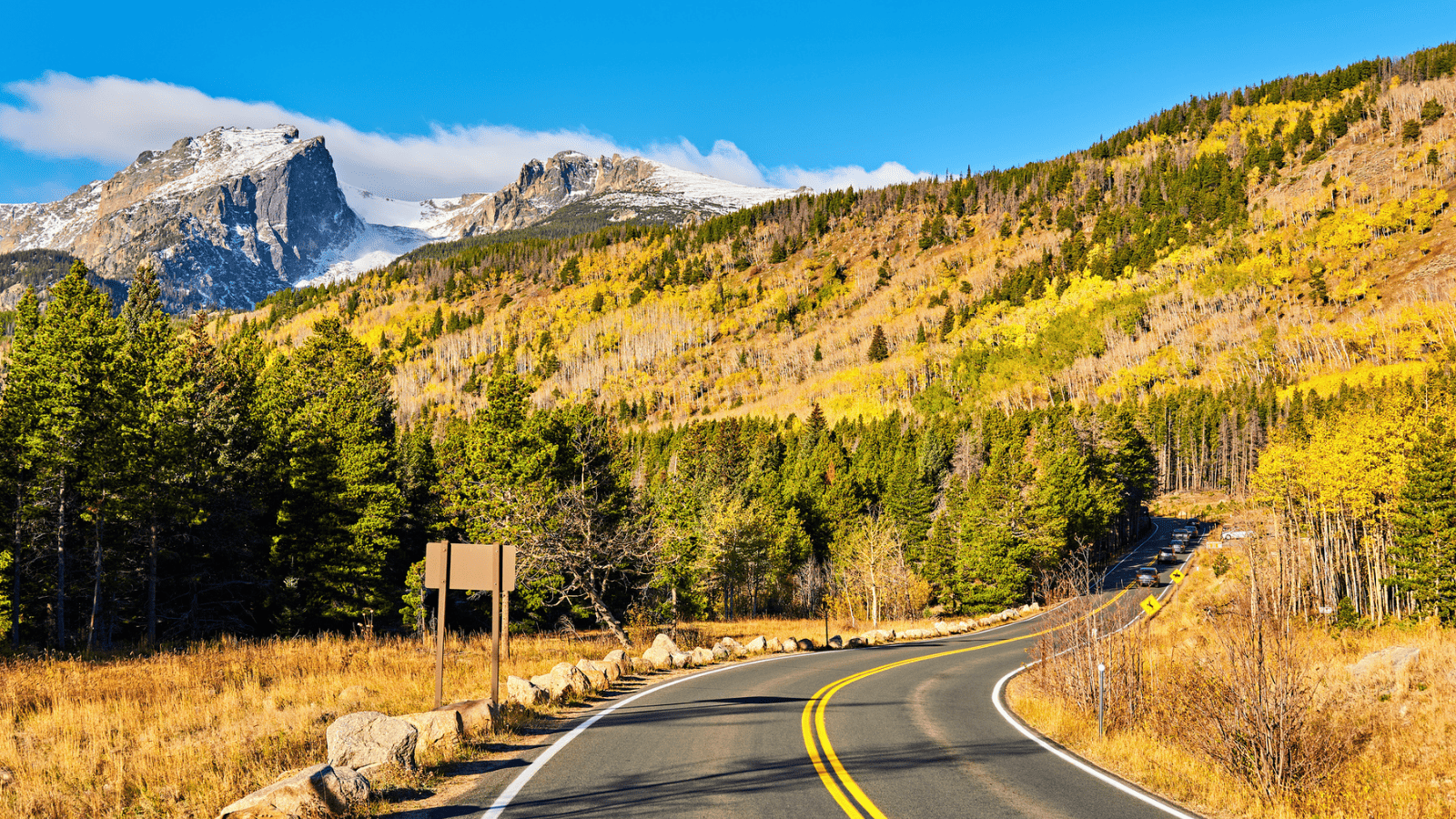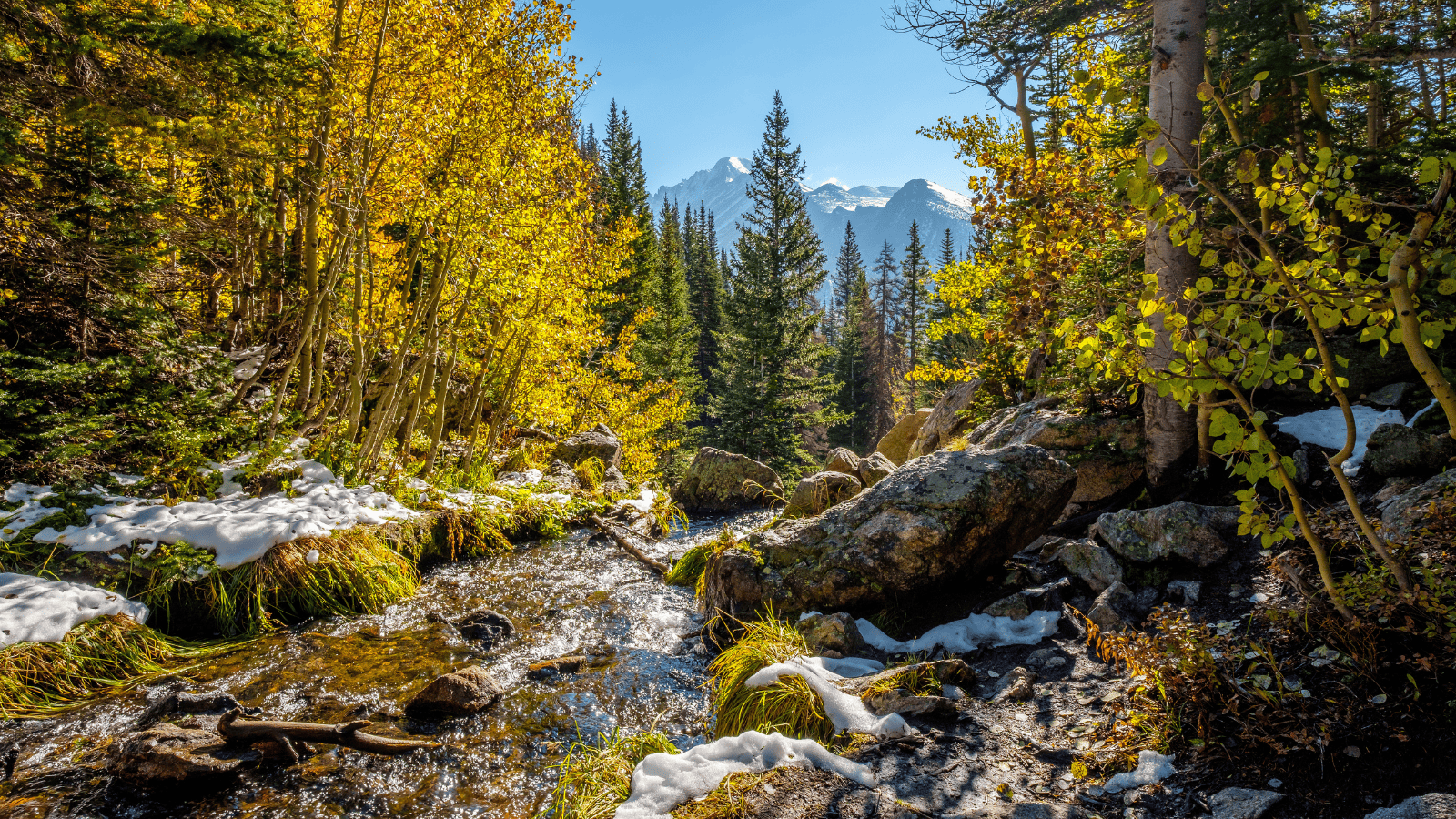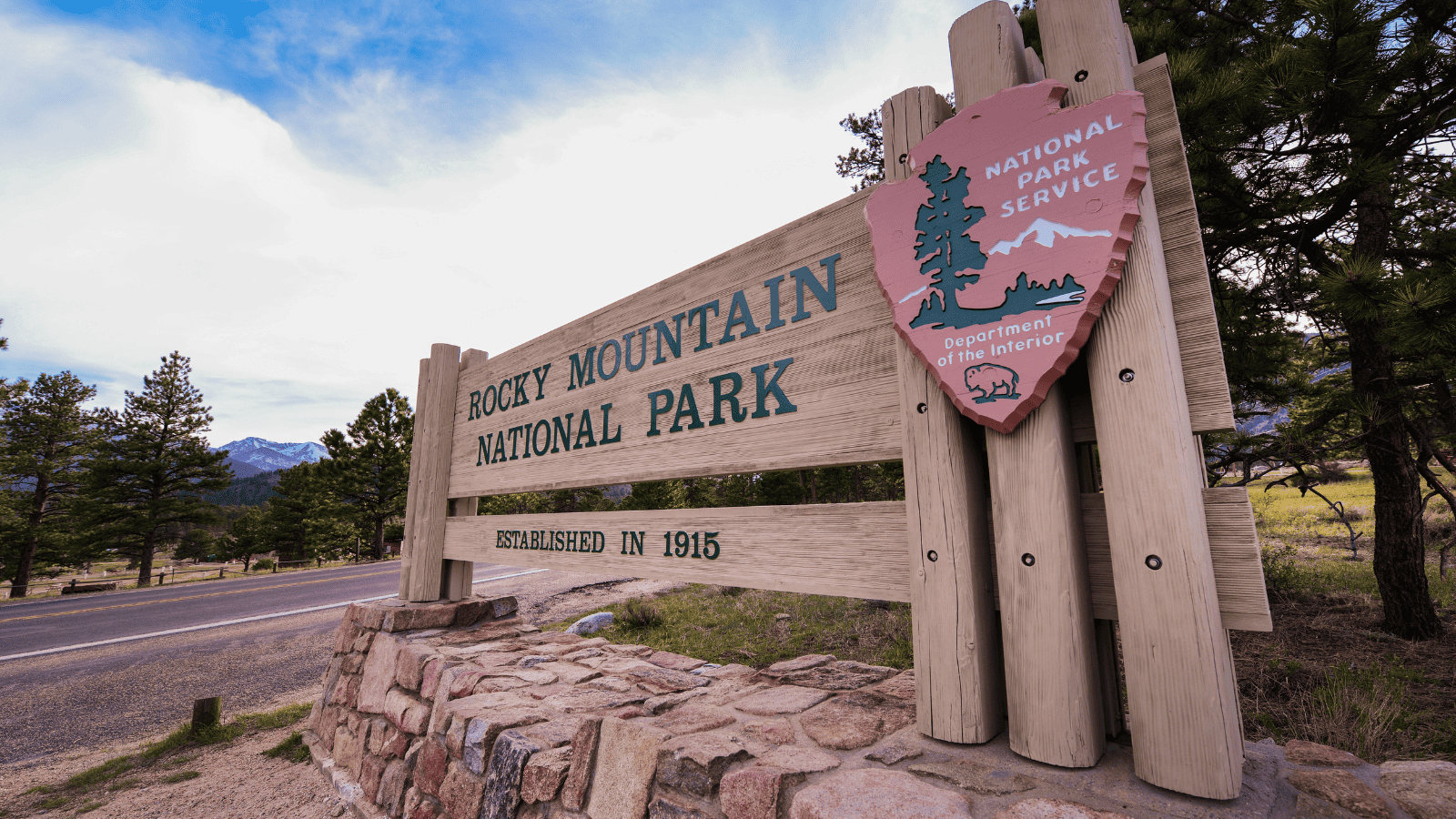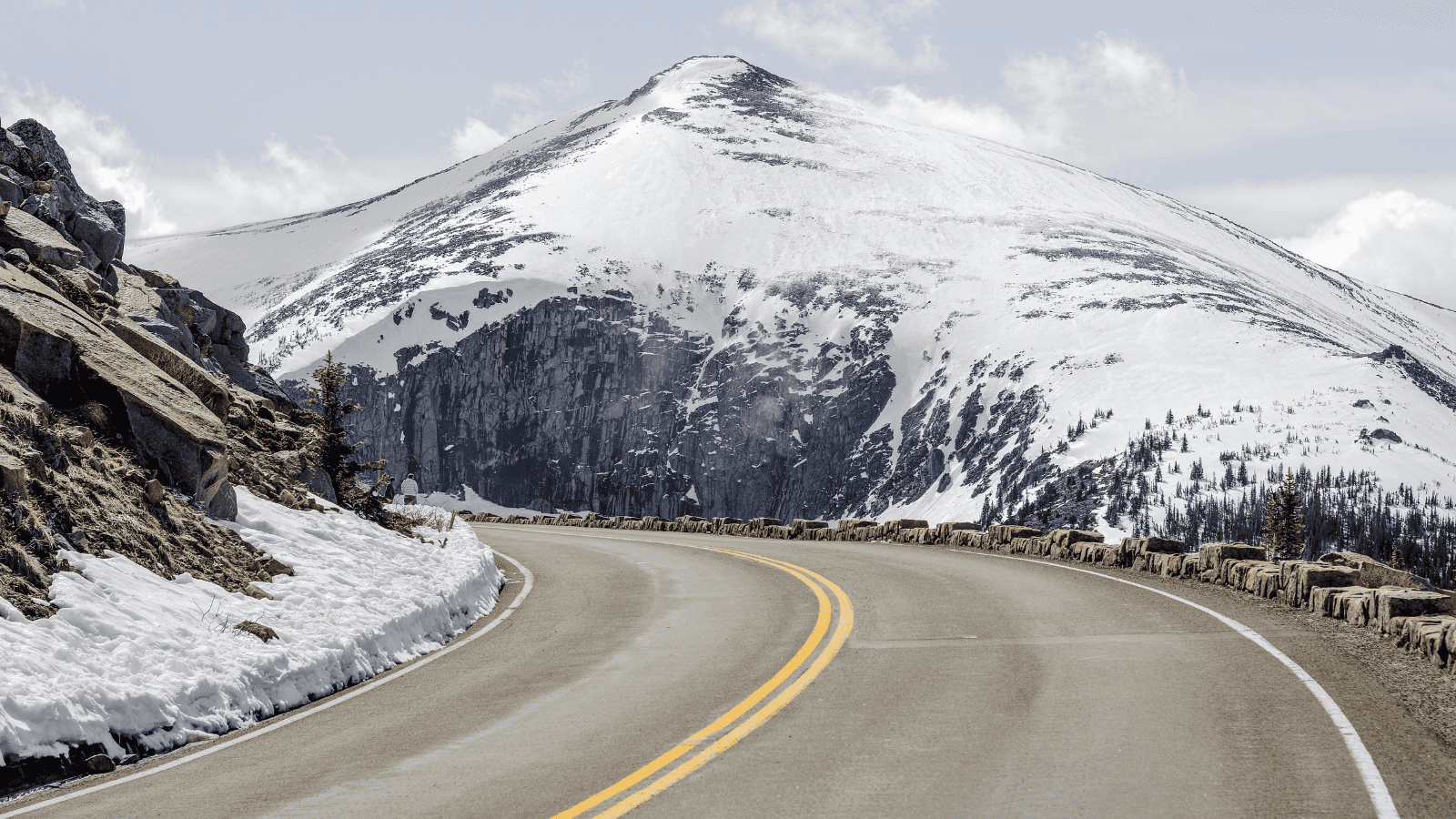Megan Bryant is a passionate writer and traveler who has combined her two loves to help others fulfill their traveling dreams. When she isn’t writing, she’s usually curled up with her 3 Dachshunds and a good book or planning her next adventure—wherever that may be.
The Rocky Mountain National Park in Colorado straddles the continental divide and has breathtaking mountains, peaceful alpine forests, and glimmering lakes dotted throughout its 256,000 acres.
Home to elk, black bears, and moose, the Rocky Mountain National Park has excellent hiking trails, climbing opportunities, and 120 designated backcountry campsites which allow you to explore the park’s mesmerizing wilderness.
If you’re planning a trip to the Rocky Mountain National Park, there is everything you need to know before arriving at one of the best National Parks in America.
How To Get to the Rocky Mountain National Park

The Rocky Mountain National Park is about a two-hour drive from Denver, Fort Collins, and Denver International Airport, and there are a few ways to reach the park—depending on which way you’re coming from.
The park’s primary east-side entrance is called Beaver Meadows. And to get there, you’ll need to take U.S. Highway 36 from the south or U.S. Highway 34 from the north or east.
Alternatively, if you prefer to drive the scenic route, take the Peak-to-Peak Scenic Byway, which stretches for 55 miles down the Continental Divide. For travelers coming in from the west to the Kawuneeche Entrance of the park, you’ll need to drive down U.S. Highway 34.
Things You Need to Know Before Visiting

There are a few things you should know before visiting the Rocky Mountain National Park, and the first is altitude sickness. The Rocky Mountain National Park has peaks of up to 14,000 feet in elevation, meaning you could suffer altitude sickness while hiking through the park—especially if you’ve come from a destination that is at sea level. Altitude sickness can bring with it headaches, vomiting, and disorientation. So take it easy on your first day or two in the park.
The second thing you should know is that the park experiences unpredictable weather, and depending on your altitude, the temperature can vary by 20 to 30 degrees. Thunderstorms can roll in fast, so it’s best to be prepared for all types of weather by packing extra layers and waterproofs.
Third is road closures which are fairly common throughout the National Park. It’s best to check Rocky Mountain National Park’s website so you can plan your trip accordingly.
And finally, the Rocky Mountain National Park is the third most visited park in America, so expect crowds in car parks and popular scenic areas. Unfortunately, there isn’t much you can do about other park visitors. But you can get up early to hopefully beat the majority of your fellow campers to the scenic Rocky Mountain areas.
The Best Time to Visit

Undoubtedly the busiest season in the Rocky Mountain National Park is from summer to mid-fall. The summer and early fall months bring with them beautiful wildflowers, active wildlife, and my personal favorite, autumnal foliage. The weather in the summer/fall months is also a bonus, as you can expect warm sunny days and cool, crisp nights—the perfect combination for a weekend-long camping trip.
Additionally, winter and spring are also great times to visit the park, as snowshoeing, cross-country skiing, and backcountry skiing are popular activities to take part in. Be warned, however, that temperatures will be extremely low, and you may be dealing with strong winds and deep layers of snow.
Entry Permits

During the busy season in the Rocky Mountain National Park—from late May to late October—you will need to reserve a timed-entry permit. By reserving one of two different permits on the recreation.gov website, you’ll be allowed to enter the park during peak times. The permits that are available are park access and park access+, with the latter giving you access to the Bear Lake Road Corridor.
Additionally, you will also need a park entrance pass and a 1-day or 7-day vehicle pass. For those who plan to camp in the National Park, you will also need a wilderness camping permit that is required year-round. You can pick your wilderness camping permit up from the Headquarters Wilderness Office or the Kawuneeche Visitor Center.
60% of permits will be released a month prior to the date of arrival, and the additional 40% will be available the day prior.
Hiking

One of the best activities in any National Park—Rocky Mountain included—is hiking. With 350 miles of trails across the entire park, avid hikers can enjoy everything that Rocky Mountain has to offer by following the various trails that increase in difficulty. Of the trails, however, the most popular are:
- Emerald Lake Trail
- Sky Pond via Glacier Gorge
- Gem Lake Trail
- Dream Lake Trail
- Lake Haiyaha
- Bear Lake Loop
- Mount Ida
Rock Climbing

The Rocky Mountains may be an excellent hiking destination, but really, it’s a climbers’ park. With massive cliffs and high-altitude peaks, rock climbers can get involved with one—or more—of the park’s 500 established climbs.
Similar to the park’s hiking trails, there are climbing routes for beginners and routes for even the most experienced climbers. For one of the best climbing areas in the park, head over to Glacier Gorge and climb the north ridge of the spearhead. After a six-mile approach and a fairly difficult climb, you’ll have impeccable views of the gorge that lies below—every climber’s dream.
Wildlife Viewing

Wildlife is in abundance throughout the Rocky Mountain National Park, and if you’re lucky, you’ll catch sights of grizzly bears, gray wolves, elk, moose, and bighorn sheep.
The East Inlet Trail to Lone Pine Lake provides an excellent opportunity to see moose, while your best chances of seeing big horn sheep are at higher elevations. As for elk, well, you should have no trouble spotting them as the park has an estimated population of 800.
The Scenic Drive

The Trail Ridge Road is a 48-mile alpine highway that connects the towns of Estes Park and Grand Lake. As America’s highest continuous paved road, the Trail Ridge Road brings in road trippers from all over the country as you get spectacular views of the Rocky Mountains, the lush valleys, and the alpine forests that stretch for miles down below.
It is important to note that from October through to May, Trail Ridge Road closes due to snow accumulation. So if you want to enjoy one of America’s most scenic drives, visit the park in the summer months.
Accommodation in the Park

Unlike Yellowstone, the Grand Canyon, and Zion, the Rocky Mountain National Park doesn’t have an in-park lodge meaning camping is your only option. The park has five campgrounds within its borders: Aspenglen, Glacier Basin, Longs Peak, Moraine Park, and Timber Creek. All the sites in the park are tent-only sites, and you will need to reserve them before your trip commences.
If you prefer a hotel stay when visiting America’s National Parks, one hotel nearby is the Stanley Hotel—famously known for inspiring Stephen King’s, The Shining. If you aren’t scared of horror movies, the boutique hotel is an excellent place to stay while visiting the park. And with a pool, lake views, and comfortable cabins, there really is no better place to rest your feet after a long day on the trails.
Food and Drink in the Park

Dining options in Rocky Mountain National Park are extremely limited as only the Cafe at Trail Ridge—inside the Alpine Visitor Center—serves sandwiches and coffee. Outside the park grounds, however, you’ll find plenty of eateries, especially in Estes Park, so head there to refuel before or after your hike.

